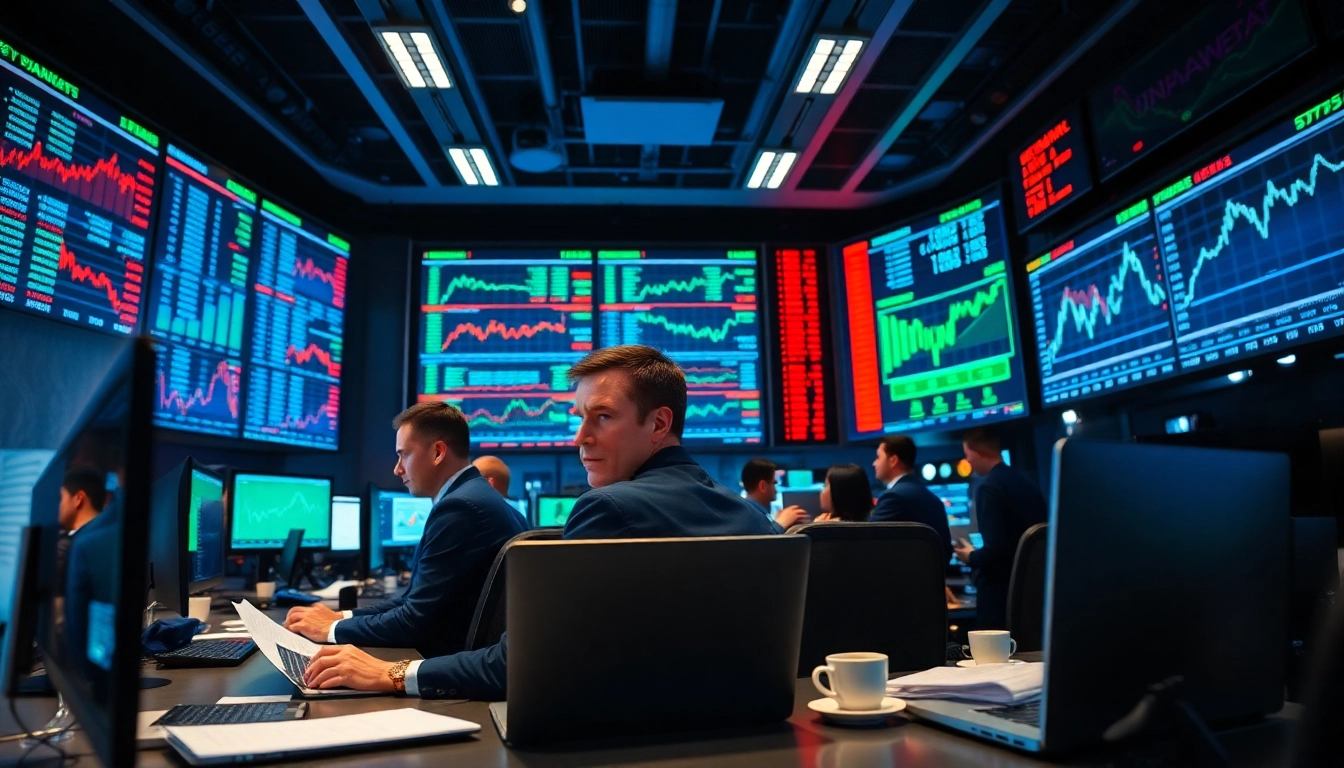Understanding Trade Futures and Their Importance
In today’s rapidly evolving financial landscape, understanding the dynamics of trade futures is vital for both individual traders and organizations seeking to navigate global markets effectively. Trade futures represent agreements to buy or sell a particular commodity or asset at a predetermined price on a specified date in the future. This mechanism not only provides an avenue for profit but also serves as a crucial tool for risk management, allowing traders to hedge against price fluctuations in underlying assets.
What are Trade Futures?
Trade futures are standardized contracts traded on exchanges that obligate the buyer to purchase, and the seller to sell, a specific asset at a predetermined future date and price. These assets can include commodities, currencies, stock indices, and interest rates. The essential characteristic of futures contracts is their standardization—not only in quantity and quality but also in the settlement dates and locations, making them highly liquid and tradable across various platforms.
The Role of Trade Futures in Global Markets
Trade futures play an instrumental role in global markets due to their ability to provide liquidity and price discovery. They facilitate efficient trading by allowing participants to take positions based on anticipated future price movements. Furthermore, they offer opportunities for both speculators aiming for profit and hedgers looking to mitigate risk. By engaging in futures trading, companies can lock in prices for raw materials, protecting themselves against future price rises, thus ensuring more predictable budgeting and operational planning.
Key Benefits of Engaging in Trade Futures
Participating in trade futures provides several benefits, including:
- Leverage: Futures contracts often require traders to post margin rather than the full contract value, allowing them to control larger positions with relatively small amounts of capital.
- Diversification: They enable investors to diversify their portfolios beyond traditional asset classes, tapping into various sectors like agriculture, energy, and foreign currencies.
- Liquidity: Most futures are traded on major exchanges which ensures high liquidity, allowing traders to enter and exit positions with relative ease.
- Hedging: Businesses can hedge against price changes in raw materials or other costs, thus stabilizing profit margins and reducing uncertainty.
Common Challenges Traders Face with Trade Futures
Market Volatility and Its Impact
One of the primary challenges faced by traders in the futures market is volatility. Price swings can be drastic and unpredictable, impacting both short-term and long-term trading strategies. High volatility can lead to increased margin calls and significant losses, making it essential for traders to establish a clear risk management framework before entering the market. Additionally, understanding the factors driving specific market movements—such as political events, economic indicators, or natural disasters—is crucial for navigating volatile conditions effectively.
Risk Management Strategies for Trade Futures
Effective risk management is crucial when trading futures. Some common strategies include:
- Stop-Loss Orders: Implementing stop-loss orders helps to limit losses by automatically closing positions when they reach a certain level.
- Position Sizing: Carefully determining the size of each position based on account size and risk tolerance can prevent significant drawdowns.
- Diversification: Diversifying across different underlying assets can reduce the impact of adverse movements in any single position.
- Regular Review: Continually assessing positions and market conditions can help traders adapt their strategies in response to changing dynamics.
Analyzing Market Trends Effectively
Understanding and analyzing market trends is fundamental to successful futures trading. Traders often utilize various analytical methods, such as:
- Technical Analysis: This approach involves studying price charts and patterns to predict future movements based on historical data.
- Fundamental Analysis: Assessing the underlying economic factors that can influence asset prices, including supply and demand factors, economic reports, and geopolitical events.
- Sentiment Analysis: Gauging market sentiment through surveys, news stories, and social media can provide insights into potential market movements.
Strategies for Successful Trade Futures Trading
Technical Analysis Techniques
Technical analysis forms the backbone of many futures trading strategies. Some techniques include:
- Moving Averages: Traders use moving averages to identify trends and reversals, often looking at crossovers for signals.
- Relative Strength Index (RSI): This momentum indicator helps traders identify overbought or oversold conditions, providing potential entry and exit points.
- Bollinger Bands: Featuring bands plotted above and below a moving average, these help traders understand volatility and potential price targets.
Fundamental Analysis in Trade Futures
Fundamental analysis in trade futures focuses on understanding the underlying factors that affect prices in the market, such as:
- Supply and Demand: Analysis of how factors like weather conditions, geopolitical tensions, and global economic trends affect supply and demand for commodities.
- Economic Indicators: Monitoring reports like employment statistics, GDP growth, inflation rates, and interest rates can influence traders’ decisions.
- Seasonality: Many commodities exhibit seasonal patterns due to agricultural cycles, which can be leveraged in trading strategies.
Choosing the Right Trading Platform
Selecting the right trading platform is crucial for futures traders. Factors to consider include:
- User Interface: An intuitive platform that is easy to navigate can greatly enhance a trader’s experience.
- Fees and Commissions: Understanding the cost structure of different platforms is essential, as high fees can eat into profits.
- Customer Support: Reliable customer support can be invaluable, especially during critical trading moments.
- Tools and Resources: A good platform should provide technical analysis tools, charting capabilities, and access to insightful market research.
Implementing Proven Practices for Trade Futures
Setting Up Your Trading Environment
Creating an effective trading environment involves more than just choosing the right platform. Key elements include:
- Technology: Invest in a well-functioning computer, dual monitors for multitasking, and reliable high-speed internet to ensure smooth trading operations.
- Desk Setup: An ergonomic desk and chair can help maintain comfort during long trading hours, contributing to better decision-making.
- Market Monitoring: Arrange for real-time market data feeds and alerts to stay informed about price movements and news developments.
Developing Your Trade Futures Trading Plan
A well-structured trading plan outlines your approach to the markets and should encompass key components:
- Trading Goals: Define realistic and measurable goals that you aim to achieve within specific time frames.
- Trading Strategy: Select the methodologies you will employ, whether based on technical, fundamental, or a combination of analyses.
- Risk Management Guidelines: Clearly outline your risk tolerance and how you will manage potential losses through stop-loss orders and position sizing.
- Review Process: Establish a routine for reviewing trades and performance to identify strengths, weaknesses, and areas for improvement.
Real-World Examples of Successful Trade Futures Strategies
Learning from successful traders can provide insights into effective strategies. Some notable strategies in the trade futures realm include:
- Commodity Trading Advisor (CTA) Strategies: Many CTAs use a combination of technical and systematic strategies, which can be highly effective in futures markets, especially in the energy and agricultural sectors.
- Hedging Strategies: Companies like airlines often use futures to hedge against fuel price spikes, stabilizing their operating costs effectively.
- Trend Following: Seizing on momentum trades by riding the coattails of existing market trends can be lucrative if positioned correctly.
Measuring Success in Trade Futures Trading
Performance Metrics Every Trader Should Track
Tracking performance is essential to evolving as a trader. Key metrics include:
- Profit and Loss (P&L): Simple yet fundamental, this metric tracks how much money you are making or losing over time.
- Win Rate: This measures the percentage of profitable trades out of the total number of trades executed, providing insight into strategy effectiveness.
- Risk-Reward Ratio: Evaluating the amount of risk taken for the potential reward is crucial for long-term sustainability in trading.
- Maximum Drawdown: Assessing the largest drop from a peak in account value to a trough helps in understanding risk exposure.
Evaluating Your Trading Strategy
Periodic evaluation of your trading strategy is critical. Factors to assess include:
- Consistency: Determine whether your strategy consistently generates profits or if results fluctuate significantly.
- Adaptability: Assess how well your strategy adapts to changing market conditions, without being overly reactive.
- Feedback Loops: Engaging in regular self-reflection and peer feedback can provide valuable insights that lead to improvements.
Adjusting to Changing Market Conditions
Markets are never static, and traders must be prepared to adjust their strategies based on new information and trends. Key areas to focus on include:
- Continuous Learning: Stay abreast of economic changes, industry news, and emerging technologies that may impact trading.
- Flexibility in Strategy: Be willing to adapt your trading approach when underlying conditions shift or when using new data shows a need for change.
- Emotional Control: Developing emotional resilience can prevent impulsive decisions in response to market fluctuations.



